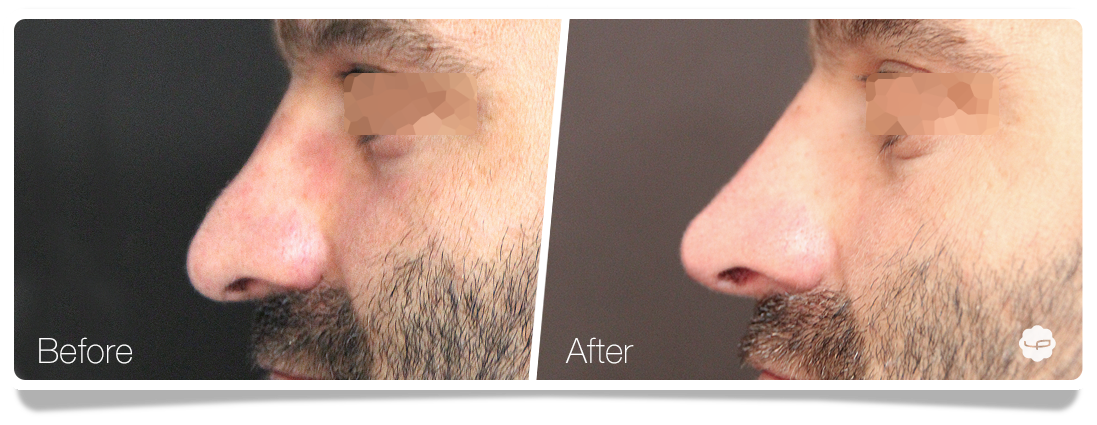
The nose being such a visible structure means that any depression or protrusion of more than 2 mm can easily be seen and can cause major stigmas and complexes. The search for non-surgical options is growing day by day, with many patients wishing to achieve only an aesthetic improvement with a short recovery period. For this reason, minimally invasive techniques play an important role in aesthetic medicine.
For a long time, it was thought that a cartilage or autologous bone graft was the only way to carry out so-called augmentation rhinoplasty. However, the great disadvantages of this technique led to the research and clinical application of biomaterials that could be used without these disadvantages.
Nasal bioplasty or rhinomodelling is a technique that is performed without cuts and without surgery. It consists of the implantation of injectable biomaterials in deep or surface levels using minimally invasive procedures. Bioplasty involves shaping through biodegradable biomaterials and is a technique which allows the human face to be restored, shaped and sculpted.
We can carry out bioplasty with volumising hyaluronic acid materials, recommended for their greater safety and for the duration of their effect, which lasts for between 6 and 12 months. For slower biodegradation, other longer-lasting products are used, such as calcium hydroxyapatite (Radiesse®), polylactic acid (Sculptra®) or polycaprolactone (Ellansé®) with an approximate duration of 12 to 18 months.
Biodegradable fillers refers to material that dissolves in the human body through natural processes, disappearing after degrading and being reabsorbed.
Currently in rhinomodelling, it is most usual to inject a biomaterial into deep levels using microcannulas or microneedles, following the technical principles developed through years of experience in this procedure. It is essential that the person performing the procedure is trained and experienced in each of the filling procedures.
It is also very important to take into account the anatomical characteristics of the nose, which make this organ very suitable for bioplasty.
In Clínica Áureo, the patient evaluation is carried out after the physical examination, which usually includes direct observation, with auxiliary lights and with the help of digital photographs. This assessment is essential to correctly diagnose the aesthetic changes and, with filling, to modify small depressions or angles, or to change the angle of the tip of the nose for a nose that is more in harmony and balance with the patient's face.
It is carried out in our clinic, with a procedure lasting a few minutes, so the patient can see the final result immediately. It is practically painless. Only local anaesthesia will be applied to the tip of the nose, as it is more sensitive.
The area may be a little inflamed or red for a few days. It is advisable not to wear glasses or touch your nose for at least 48 hours. In the weeks afterwards, saunas and deep facials should be avoided, along with tasks or sports that require a lot of effort.
It is not appropriate for very large noses, since it is not possible to reduce them with this kind of treatment. For noses needing the bone structure modified, this is also not indicated. In these two cases or in the case of a great radical change, a conventional rhinoplasty would be necessary. At Clínica Áureo, we do not recommend it to patients under 17 years of age because their nose is not definitively formed.
As you can see, modifying the shape and appearance of the nose without surgery, in the hands of a good professional, is a quick and easy treatment thanks to bioplasty. If you are interested, we are your aesthetic medicine clinic in Palma de Mallorca.
Own cases of Rhinomodelation.











It has a cost of 60€, although said amount will be discounted from the price to be paid for any of the medical treatments recommended by our professionals in said consultation. Read more…





